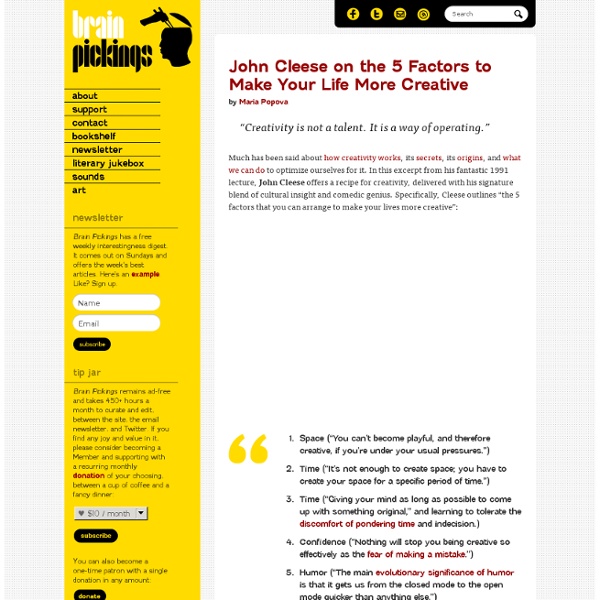Understanding & Growing Your Creative Mind Pt. 1/3
This is a very difficult and abstract topic. Even though it’s one we know well, there is no question the core aspects of this concept are difficult to grasp. Creativity is a foundational and highly celebrated part of our reality and a critical factor of many modern-day careers, passions and hobbies. Many of us desire and celebrate this phenomenon, but the foundational aspects can be elusive. How does one become creative?
Hackschooling
Jason, what's with the John Lennon quote? It's a great quote, but unless someone has explicitly told you otherwise, it has nothing to do with Logan any more than it has to do with your story above; which might be fine less the need to somehow single out your obsession with John Lennon (who's great but your making big reaches; not a good sign). It's not really necessary to try and make a great link in the specific way you have, between a good historical quote and some necessity by Logan to somehow tell the audience; "Hey, everything I've done is from John Lennon."
Give it five minutes
A few years ago I used to be a hothead. Whenever anyone said anything, I’d think of a way to disagree. I’d push back hard if something didn’t fit my world-view. It’s like I had to be first with an opinion – as if being first meant something. But what it really meant was that I wasn’t thinking hard enough about the problem. The faster you react, the less you think.
Learning on the Edge
One of the first exercises I ask the pre-service and in-service teachers in my Psychology of Learning course to do is define learning. This is not a look-up-in-the-dictionary type of activity. They are asked to do so using their own thoughts, images, body movements, and chants/music.
Idea Person’ 10 TIPS
In an age where new ideas quickly becomes commodity, creativity is a must. It is creativity that continuously give us new ideas to keep us ahead in the competition. Regarding this, I recently found an interesting book: Thinkertoys by Michael Michalko.
40 Maps That Will Help You Make Sense of the World
If you’re a visual learner like myself, then you know maps, charts and infographics can really help bring data and information to life. Maps can make a point resonate with readers and this collection aims to do just that. Hopefully some of these maps will surprise you and you’ll learn something new. A few are important to know, some interpret and display data in a beautiful or creative way, and a few may even make you chuckle or shake your head. If you enjoy this collection of maps, the Sifter highly recommends the r/MapPorn sub reddit.
10 Ways History’s Finest Kept Their Focus at Work
Post written by Albert van Zyl from the blog HeadSpace. The lives of great people give us interesting clues about how to organise our days. All of them attached great value to their daily routines.
Magic Hours: Tom Bissell on the Secrets of Creators and Creation
by Maria Popova “To create anything… is to believe, if only momentarily, you are capable of magic.” Creativity is a peculiar beast. Its nebulous nature and elusive allure don’t stop us from going after it with stubborn precision, tracing its history, dissecting its neuroscience, flowcharting our way to it and itemizing it into a 5-point plan, all in the hope that, if only we understood its inner workings enough and engineered the right conditions, it would bestow its gifts upon us.
Brainstorming
Description: Brainstorming is the name I have chosen to use to describe techniques aimed at generating new ideas (e.g. game concepts, features, game mechanics, play mechanics, etc.) or solving design problems (e.g. imbalances, loopholes, control schemes, etc.) through spontaneity. As a game design tool, brainstorming is not isolated to the beginning of the game design process but recurs throughout the entire process. While these techniques can sometimes seem a waste of time and non-organic, their primary advantage comes from structuring ideation and problem-solving (in a group or alone), which can save a game designer(s) a lot of time and energy. In general, brainstorming is meant to:



